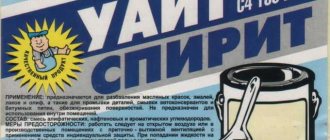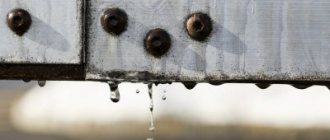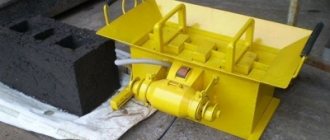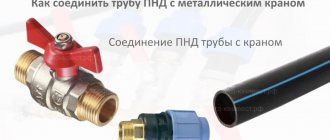The need to prepare metal products for painting is due to an increase in the adhesion characteristics of the substrate to the paint and varnish material and the resistance of the metal to corrosion processes. All this will have a positive effect on the service life of the painted products. However, most owners are much more concerned about the presence of rust, which must be removed during the metal preparation process, than about degreasing, which is why painting work is carried out without this important and mandatory operation.
What is defatting?
Degreasing is a special procedure that is performed to remove fatty substances from the surface. Many paint and varnish compositions react negatively to fat particles that remain after touching, etching, and washing. This causes the dried paint to crack.
Fatty contaminants are divided into three groups depending on the degree of accumulation. They can be weak, medium, or increased.
Glass products
The main advantage of glass is its chemical inertness, which allows it to be cleaned using almost any type of solvent. But when purchasing the drug, you should remember that rubber seals and frames do not have such characteristics. These parts will need to be removed during processing or at least securely protected from exposure to aggressive agents.
Preparing glass for gluing Source stroy-podskazka.ru
Purpose
Degreasing metal before painting is the most important procedure that is mandatory before applying acrylic, powder, or alkyd paint. The fat film slows down the adhesion of paint compositions to the surface on which they are applied.
Body treatment before painting
Leather furniture
Painting leather is much easier than restoring wood furniture. However, this task also requires great care when choosing degreasers. Painting should be done quite carefully, otherwise the material may collapse. The area must be thoroughly cleaned first. The glossy layer is removed with acetone so that the paint goes on more evenly. An aniline agent or a sprayable nitro dye-based product is best. The substance is applied at a distance of about 30 cm to prevent the formation of smudges.
A piece of fabric and solvent Source stroy-podskazka.ru
Before applying the second layer of the substance, you must wait until the previous one has completely dried. If you don’t have paint on hand or want to use the safest possible product, you can use a composition based on natural ingredients. Oak bark, tea decoction, celandine, onion peel or infusion of birch leaves are well suited for this purpose. You can get a beautiful brown shade using potassium permanganate or wood stain. To apply the product, use a regular brush or swab. If you heat the mixture to a high temperature, the shade will be brighter and more expressive.
Cleaning methods
All methods for cleaning metal from fatty deposits can be divided into several broad groups:
- Chemical methods. The most effective, popular. Organic solvents are used for cleaning. In production, ready-made solvents are rarely used due to the risk of explosion.
- Cleaning with water. Any housewife knows that ordinary water is not suitable for removing grease particles from metal surfaces. For the aqueous solution to be effective, it must be heated to 65°C. You need to add surfactants to it.
- Alkaline degreasers for metal. Special compounds. Alkaline degreasers have one disadvantage - after cleaning the surface from grease, additional treatment must be carried out to prevent the possible formation of rust.
- Emulsion compositions. Such degreasers are used to remove coarse contaminants. They have a lot of strengths.
A separate group includes electrochemical and ultrasonic methods for cleaning metal surfaces. The workpieces are placed in special baths through which directed ultrasound is applied. Only suitable for processing small parts.
Complex formulations
The top solutions for removing oils from substrates include:
- Trichlorethylene - suitable only for ferrous metal, removes film as quickly as possible, but does not help well against organic matter; cannot be mixed with water.
- Tetrachlorethylene – broad-spectrum, also effective in cases with non-ferrous metal; often used for workpieces made of aluminum and magnesium alloys.
- W900 - made on the basis of volatile compounds, which is why it is so convenient to cover smooth and textured, simple and complex parts; good for processing auto elements.
- Nefras BR-2 - with it you don’t have to ask whether it is possible to degrease the metal with gasoline before painting, because it costs less and does an excellent job; a Russian-made product actively sold on the domestic market.
- Body 770 – has a wide range of applications; removes organic matter as well; presented in liquid or spray form, produced in Greece.
- Antisilicone – cleans non-ferrous metals, rubber, paintwork, plastics; Packaged in spray bottles, bottles, jars, also suitable for glass.
- REOFLEX – fast solvent with reduced evaporation characteristics; You can apply it already at + 18 0C, but be careful, because it is very flammable.
- CarFit is a German product for removing oil stains from the body and other parts of the car.
We have looked in detail at what and how to degrease the surface before painting the metal: choose your method, and we will provide you with the composition for the treatment - contact us for a profitable order of quality products. The Rokta company also sells band saw machines, call us at the contact numbers. Our managers will advise you. At the end of the topic, we suggest watching the video:
Popular means
Before you begin the metal degreasing procedure, you need to consider the most popular options for grease removal products.
White Spirit
The most popular degreaser. It can be bought at any construction market, in stores with auto parts, and household chemicals. The principle of cleaning the surface from grease:
- Wear gloves, a respirator, and safety glasses.
- Apply white spirit to a dry cloth.
- Wipe the dirty area with force.
Gasoline, acetone and analogues
Effective degreasers for cleaning metal surfaces. Peculiarities:
- If kerosene is used, you need to use clean liquid. Kerosene cannot be used to clean large parts of the body.
- To clean large parts, it is recommended to use high octane gasoline.
- Acetone. The product enters into chemical reactions with different types of metals. This may ruin the appearance of the workpiece.
- Trichlorethylene. Liquid for degreasing ferrous metals. Before application, you need to wipe the part with a dry cloth to remove any remaining water.
A separate group of products includes soap solutions. They can be prepared using any soap or detergent.
Antisilicone
A cleaning product that resembles a windshield liquid that creates an anti-rain effect. Antisilicone is suitable for degreasing metal, rubber, and plastic. Does not destroy the old paint layer.
Antistatic
Used for degreasing metal surfaces in places where metal comes into contact with plastic elements. Antistatic agents dielectricize the surfaces on which they are applied. Therefore, before painting, there is no grease or settled dust left on them.
Alkalis
Alkalies are contained in various cleaning compositions for cars, plumbing, and household appliances. With their help, you can clean plastic and metal from dirt, and degrease various materials. When working with alkaline compounds, it is necessary to take into account a number of features:
- When degreasing a car before painting after applying alkalis, you need to put it in a dry garage to dry.
- If the package says that the solution is effective only after heating to 60°C, you can apply it to the metal and heat it with a hairdryer. When grease comes to the surface, it should be wiped off with a dry cloth.
When purchasing an alkaline product, you need to study its composition. Some components can damage the decorative coating and ruin the appearance of the metal.
Body degreasing
Why degrease metal?
In chemical terms, the degreasing procedure is the process of removing the top layer of fatty acids and oily substances from the surface of the metal (and not only). Even a seemingly clean surface can have a thick, oily film.
Important: any metal surface must be degreased before applying a paint/varnish layer. Otherwise, the “holding” period of the applied layer on top of the “dirty” surface will decrease by 60%-90%.
The process is especially important for vehicle owners. To avoid swelling of the paint layer, the appearance of cracks and other minor defects, washing off the fatty layer from the surface is a basic processing condition that even a novice automotive mechanic knows about.
What are the objectives of degreasing:
- destruction of the layer of dust and dirt that was accumulated on the surface of the metal during the period of inactivity;
- removing grease and oil stains;
- increasing the adhesion force between the metal surface and paint;
- increasing the service life of the applied finishing layer.
Even human touches contaminate the surface (think of fingerprints on the screen of your smartphone). Remains of sprays, tape, applications, bitumen/rubber stains are just a small part of the list of obstacles between the paint layer and the metal surface.
7 criteria for selecting heat-resistant adhesive for metal
Ultrasound and other processing methods
Degreasing methods:
- Use of ultrasonic baths.
- Electrochemical method. To clean metal you need to use industrial equipment. Therefore, electrochemistry is not suitable for domestic use.
Since the degreasing process involves not only removing the fat film, but also cleaning the surfaces from contamination, it is permissible to use a mechanical processing method. To do this, you can use various power tools - an angle grinder, a grinder, a drill with a special attachment. Complex contaminants are removed with coarse abrasives. Gradually the grains are reduced to create smoother surfaces.
Before you start painting metal parts, you need to prepare them. To do this, you need to remove contaminants. After rough cleaning, you need to start removing grease stains, which can reduce the adhesion of paint to metal.
Preparations for wood
Before painting, wood is thoroughly cleaned of old layers of paint and varnish. First, the material is treated with sandpaper, a plane or a metal brush. Then you can apply a special or universal solvent. Gasoline and other flammable products must not be used. When the drug is on the surface, it is lightly cleaned and the painting itself begins.
Wood surface treatment Source kraski-net.ru
The harm of fatty contaminants
Grease contaminants pose a certain danger to metal coloring because:
- Residual grease makes it difficult to apply the coating;
- A problem arises when painting the surface evenly;
- It is difficult to apply paint to metal without risk of damaging the coating;
- The service life will be reduced and the quality will decrease.
How can I replace degreaser?
Most often, medical alcohol is used as an alternative to a degreaser. This composition has long established itself as a means of removing grease stains and dust residues. The method is not particularly popular, given the cost of real alcohol. Store-bought degreasers are inexpensive and more convenient to use.
Various techniques are also used: ultrasonic cleaning, sandblasting.
Soap solutions and cleaning products can easily clean parts, unless we are talking about old dirt.
How to degrease plastic
Due to the structure of plastic, it does not adhere well to other materials, so it requires pre-treatment before applying the coloring composition. However, not every degreaser is suitable for it.
To understand how it will react to a particular chemical, you need to check its reaction by wetting a small piece of the surface in the selected solution.
It is known that plastic accepts liquids such as:
- White Spirit;
- Liquid containing alcohol;
- Antistatic spray.
If you are concerned that the product you choose may have a strong effect on the plastic, you can dilute it with a small amount of water. Plastic for household use can be degreased using the above means. But as for cars, it is appropriate to use more gentle liquids, such as, for example, anti-silicone.
If you use abrasive products, do not rub them into the surface. Take it easy and don't forget the gloves.
How to degrease the surface
A special soft cloth and a special solvent will help you remove fat deposits mechanically. They are suitable for working with small areas.
White Spirit
This product has become widespread at service stations and among car owners. The composition of the product consists entirely of organic elements. It is the most common product, the advantage of which is its low price. The only drawback is the strong smell.
Acetone and gasoline
If you don’t have professional products at home, and you can’t purchase them as soon as possible, but you need to start working immediately, then you can always use the available grease-solvents, which are found in almost every home.
For example, acetone, gasoline and kerosene work well with oily stains. Of course, they have different purposes and different functionality.
It is believed that gasoline helps in the fight against fats more effectively than the two above-mentioned solvents. Its main difference is that it leaves no traces.
Using acetone at home is highly undesirable. It is quite aggressive and often leaves behind traces that are quite difficult to get rid of. Moreover, it has a very dense structure.
Antisilicone
Anti-silicone can be used to degrease car parts before painting them. Moreover, processing with its participation is good before priming and putty.
It can be purchased in special containers. Its advantages include the following:
- It retains its beneficial properties for a long period of time.
- It is economical. That is, for high-quality processing of any surface, a small amount of composition is required.
- With its help you can overcome even the oldest, stubborn stains.
The disadvantages include a strong unpleasant aroma, which forces you to work in special equipment: a protective suit, goggles, rubber gloves and a respirator.
Alkalis
When working with metal, it is suitable to use alkalis, which break down fatty acid residues without much difficulty. They interact poorly with oil directly.










